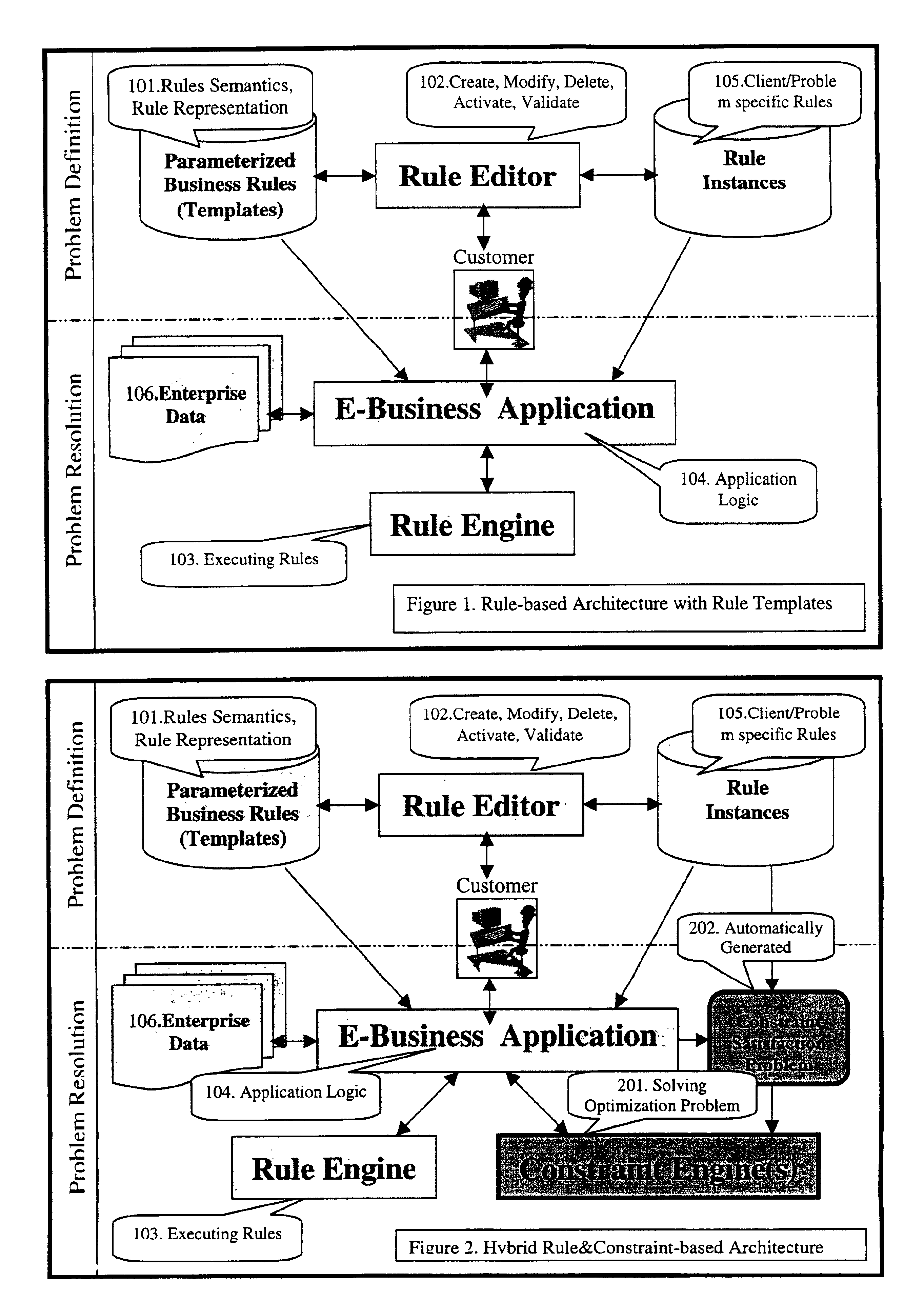Hybrid use of rule and constraint engines
a constraint engine and rule technology, applied in the field of expert systems, can solve the problems of large and complex set of rules, inability of certain customers to do certain transactions, and huge non-maintainable set of rules
- Summary
- Abstract
- Description
- Claims
- Application Information
AI Technical Summary
Benefits of technology
Problems solved by technology
Method used
Image
Examples
Embodiment Construction
Rule-based and constraint-based technologies are used together to address complex decision support problems for modem e-business applications.
FIG. 1 shows a typical rule-based system according to one embodiment. Modem rule-based systems support the methodology that allows a customer to build rules templates 101, which cover the specific business application, and then to create and maintain different rule instances based on these rule templates.
In one embodiment, the rule templates are usually represented using a specialized rule language, which allows a user to specify the semantics of the rule, the types of parameters and different user representations. A user can create and modify rule templates and rule instances using a graphical Rule Editor 102. The e-business application 104 creates a rule-based engine 103 and adds to it the proper rule instances 105 and application-specific objects, such as data from enterprise data set 106. Then it runs the Rule Engine 103, which executes th...
PUM
 Login to View More
Login to View More Abstract
Description
Claims
Application Information
 Login to View More
Login to View More - R&D
- Intellectual Property
- Life Sciences
- Materials
- Tech Scout
- Unparalleled Data Quality
- Higher Quality Content
- 60% Fewer Hallucinations
Browse by: Latest US Patents, China's latest patents, Technical Efficacy Thesaurus, Application Domain, Technology Topic, Popular Technical Reports.
© 2025 PatSnap. All rights reserved.Legal|Privacy policy|Modern Slavery Act Transparency Statement|Sitemap|About US| Contact US: help@patsnap.com


